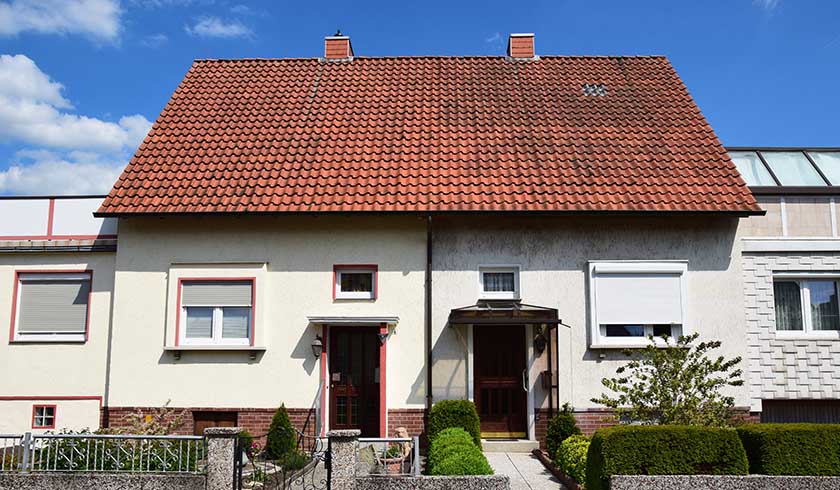Tax, legal and practical tips for splitting single-occupancy homes
Here are some vital considerations for property investors to minimise costs and maximise gains when splitting single-occupancy homes into two or more private dwellings.

From owner-occupiers with extra land space looking to profit from leasing a new sub-division on their land; to property investors looking to increase their yield before making a big sell – it can be a smart option splitting single-occupancy properties into two or more private dwellings.
Sydney based property investor, Sharon Barkhurst, said to Smart Property Investment: “We basically split our tri-story property into two dwellings by constructing a wall where a doorway used to be.
“Because my husband did all the renovations, it only cost about $10,000 and I imagine added at least $400,000 to the value of the property as a whole.”
Ms Barkshurst noted that she was receiving $1,500 per week in rental income from the single-occupancy dwelling – and is now receiving $1,850 from the dual-occupancy set up.
But the process involved in splitting property is rarely a yellow brick road. There are many considerations and restrictions that need to be considered at the feasibility stage before the land of gains can be reached.
In most cases, splitting single-occupancy homes into two or more private dwellings will require both a planning permit and building permit to go ahead.
Legal considerations
Jason Cornwall-Jones, award-winning real estate partner at law firm Ashurst, said that splitting properties without the required permits is often an offence, can adversely affect insurance coverage, and may result in the relevant authority ordering an offending building to be demolished.
Mr. Cornwall-Jones noted that the process of subdividing property generally involves:
- Submitting a draft development plan (often through a surveyor) to council for approval
- Council provides a copy of the draft to the relevant referral authorities (utility providers), who may require changes to be made to the plan to ensure land services can be delivered efficiently to each subdivision
- Council then issues a planning permit for the subdivision, which may also require additional changes to be made for compliance at the developer’s cost
“If the subdivision is for three or more lots, some councils (particularly in Victoria) may impose an ‘open space’ levy, which can require the developer to contribute to council up to five per cent of the value of the land as a condition of subdivision,” said Mr Cornwall Jones.
Practical considerations
According to Mr Cornwall-Jones, the practical considerations for splitting single-occupancy homes into two or more private dwellings include:
- Whether there are restrictive covenants on the original title that preclude more than one dwelling on the site
- Whether the applicable planning scheme permits subdivisions on the site; some planning schemes specify minimum lot sizes
- Whether developing a side-by-side arrangement is more attractive and spatially efficient than a front-to-back arrangement (since few tenants aspire to live in someone else’s backyard). The frontage of a property for side-by-sides should be a minimum of 12 to 14 metres
- Whether to use “bespoke” or “off the peg” building designs. Bespoke designs are necessary on smaller properties (with frontages under 12 to 14 meters) and generally have cost implications. “Off the peg” designs are generally readymade and more cost effective for developers
- Whether the location of the sewerage, water and electrical infrastructure on the property will need to be significantly reworked to accommodate the split occupancies. The location of underground sewerage and water infrastructure can be obtained from the water authority. Re-routing sewerage and water facilities can involve significant costs
Tax considerations
Many investors fail to take into consideration the tax implications and restrictions associated with splitting property.
Mark Chapman, director of tax communications at H&R Block, said investors who fail to properly account for the tax consequences in their tax return can lead to ATO audits, underpaid taxes, interests and penalties.
Mr. Chapman noted some outstanding taxation considerations for investors who split their property include:
- Expenses incurred in deriving the rental income are tax deductible. This could include interest on the mortgage relating to the part of the property being rented out, as well as expenses such as council rates and insurance.
- Where a building is split into two, there may be land tax implications for the part of the property that is rented out. Each state has different land tax laws, so it pays to take specific advice for your state.
- Costs of physically dividing the house are unlikely to be immediately deductible. These costs will be on capital account and added to the cost base of the property for CGT purposes. They may also qualify for capital works depreciation – which at 2.5 per cent per annum means that it will take 40 years for the whole cost to be depreciated.
- There will be loss of the CGT main residence exemption for part of the property that the owner no longer lives in. Normally, the main residence is exempt from CGT but the main residence exemption is not available for any part of the property used to earn income. That means that when the property is finally sold, the owner could face a hefty CGT bill.
“The CGT issue is a real ‘sleeper’ that may not become apparent for many years (until they sell the property), so it can be easy to overlook,” said Mr Chapman.
“The key for clients thinking of doing this is to get detailed tax and legal advice before they undertake any work so they are aware of any tax consequences, before they have committed to anything. Ongoing tax advice is also essential to ensure that they correctly disclose income and claim all the deductions they are entitled to (and don’t claim any deductions they are not entitled to).”

